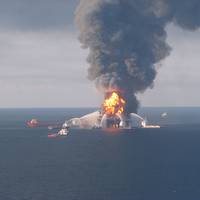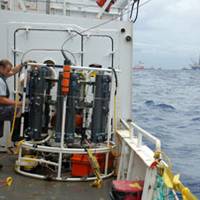What Did Scientists Learn from Deepwater Horizon?

April 20, 2020, marks the tenth anniversary of the Deepwater Horizon rig explosion, the offshore oil industry's biggest environmental disaster.Eleven people died, 17 others were injured, Transocean's drilling rig sank, and an incident caused more than four million barrels of oil to spill into the U.S. Gulf of Mexico from the BP-operated Macondo well which spewed oil into the ocean for 87 days before it was finally capped.In a review paper published in the journal Nature Reviews Earth & Environment…
WHOI Investigates Deepwater Horizon Oil Spill

Taking another major step in sleuthing the 2010 Deepwater Horizon oil spill, a research team led by the Woods Hole Oceanographic Institution (WHOI) has determined what chemicals were contained in a deep, hydrocarbon-containing plume at least 22 miles long that WHOI scientists mapped and sampled last summer in the Gulf of Mexico, a residue of the Deepwater Horizon oil spill. Moreover, they have taken a big step in explaining why some chemicals, but not others, made their way into the plume.
Wrecks of the World II, June 6-7
the World: Evaluating and Addressing Potential Underwater Threats” (WOW) II” on Monday, June 6 and Tuesday, June 7, 2011 at the Maritime Institute of Technology and Graduate Studies (MITAGS) in the Washington, DC area (Linthicum Heights, MD) USA. The conference will explore the problem of potentially polluting wrecks and recent incidents around the world that have caused government agencies and responsible parties to look proactively at preventing catastrophic oil and other chemical releases from these long-submerged shipwrecks which may contain as much as 20 million tons of oil and other hazardous materials. Sporadic or continuous leakages or potential sudden massive spillages from these wrecks pose a continual risk across the globe.
Underwater Hydrocarbon Plume in Gulf

Scientists funded by the National Science Foundation (NSF) and affiliated with the Woods Hole Oceanographic Institution (WHOI) have detected a plume of hydrocarbons at least 22 miles long and more than 3,000 ft below the surface of the Gulf of Mexico, a residue of the BP Deepwater Horizon oil spill. The 1.2-mile-wide, 650-ft-high plume of trapped hydrocarbons was detected during a ten day subsurface sampling effort from June 19-28, 2010 near the wellhead. The results provide a snapshot of where the oil has gone as surface slicks shrink and disappear.












